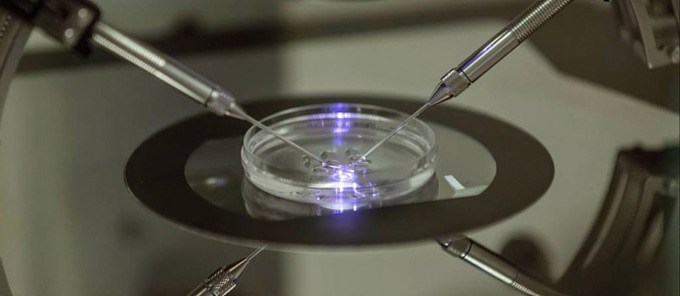In Vitro Fertilization
Alta Complejidad - Fecundación In Vitro
In Vitro Fertilization (IVF) is the technique of high complexity with greater use and is intended to achieve pregnancy in those couples who have not achieved it.
In Vitro Fertilization is a technique whose direct indications are women with tubal damage, moderate-severe endometriosis, severe moderate male factor etc. and it is indicated for all those couples that by natural, surgical methods or treatments such as insemination have failed to achieve pregnancy.
In Vitro Fertilization consists of a process consisting of the following stages:
1. Ovarian stimulation:
It consists of the application of hormones subcutaneously for about 10 days, during which time the patient has to go 3 to 4 times for consultation for follicular monitoring and blood samples for adequate control. This process is required to have an adequate number of ovules that when joined with the sperm will generate the available embryos to achieve pregnancy.
2.Ovule Extraction:
Procedure that is performed in the operating room and under a sedation of about 15 minutes. The extraction of the ovules is by transvaginal puncture with ultrasound guidance. In expert hands the complications are minimal and the patient returns to work on the same day.
3. Insemination:
It is a process that involves the union of the ovules with the sperm prior preparation.
There are 2 ways of joining the conventional one that is to place thousands of sperm around an ovule so that it naturally penetrates and the ICSI intracytoplasmic microinjection that is to introduce a sperm into each ovule that we will study later.

4. Embryonic culture:
Period in which the embryos remain in culture media in incubators for a maximum of 6 days, although in most cases they remain until the third day of embryonic development.
5. Embryonic transfer:
The transfer is usually done on the third day of embryonic development or on day 5 or 6 (blastocyst) according to the indication taken by the doctor and the embryologist. It consists of taking 1 or 2 embryos and placing them in a cannula and then introducing them into the uterus under ultrasound guidance.
6. Embryonic freezing:
After transfer the viable embryos are frozen for later use.


